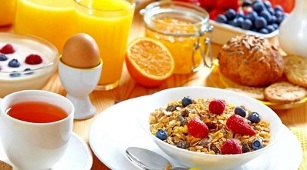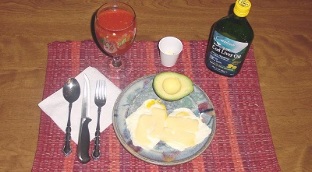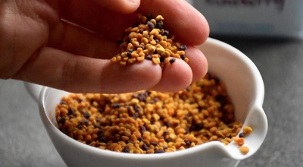
Some common diseases of the male reproductive system are prostate adenoma and prostatitis. The second is an inflammatory process that occurs in the tissue of the prostate gland, respectively, the first is a tumor formed in this organ.
This is a fairly active problem diagnosed in men. But everyone knows that proper nutrition can protect against many diseases, and even become one of the components of the treatment process. Therefore, an important role in the treatment of this disease is played by diet for prostatitis and prostate adenoma. With its help, the healing process is more active and takes less time.
The essence of such a diet
No one thinks that food is good for healing and crippling. For this reason, when pathological changes in the patient's body are detected, the doctor most often prescribes restrictions on the amount of food eaten. A similar diet has been developed to help the male body fight diseases that invade the prostate gland.
It is selected for each patient individually, taking into account the severity of the pathology, its general condition and its anamnesis, as well as taste preferences. At the same time, it has been practically proven that it is impossible to recover without changing the diet and dietary balance.
Food at least should not worsen the health condition - at best - be one of the elements of the treatment process. Therefore, the essence of the diet for prostatitis and prostate adenoma is reduced to alleviate the patient's condition.
If a person wants to recover, he or she must comply with the restrictions. “Right” food slows down the development of pathology and increases the chances of faster healing.

Particular attention is paid to products containing high percentages of selenium (Se) and zinc (Zn), which have a beneficial effect on tumors, thus reducing their size. During treatment, patients should receive 25 mg of zinc during the day, as well as at least 5 μg of selenium.
The product contains a large amount of zinc:
- Seafood: oysters, mussels, shrimp.
- Red meat, mostly beef and beef.
- Germs and wheat bran.
- Soba.
- Watermelon and pumpkin seeds
- Chocolate and cocoa powder.
- Beef liver.
- Sesame.
- Peas.
- Egg yolk.
- Mushrooms.
- Pork and beef liver.
- Rice, barley, buckwheat and oatmeal.
- Octopus meat.
- Eggs.
- Nuts and lentils.
- Cabbage.
- Pistachio.
- Peas.
- Shellfish and shrimp.
- Olive oil.
Also, do not forget about vitamin E, which increases the absorption of selenium effectively. Keep in mind that from food the body absorbs only part (in the best case scenario - half) of the micro elements in its composition.
As studies have shown, the main cause (catalyst) of adenoma manifestations is hormonal imbalance, which increases over the years. With increasing age, the amount of testosterone decreases, and at the same time the concentration of estradiol increases. Also, an increase in the amount of adipose tissue affects the appearance and growth of the tumor. This suggests that one of the ways to prevent adenoma is to control weight.
In addition, it is necessary to always take care of bowel cleansing. Therefore, diet should be associated with the solution of this problem. But before you start adhering to it, you should learn a list of foods you can and should not eat.
What else matters?
Drinking fluids with food and before bedtime is not recommended. Otherwise, the digestive process slows down, and at the same time the night load on the excretory system increases. Water and drink should be drunk between meals or one hour after meals.
You need to maintain a balanced diet for adenomas and prostatitis and a variety of foods. Protein foods must be present. Fat content is allowed, but does not exceed 30%. Basically, this must be vegetable fat.
Do not overeat at night. You need to monitor your weight, avoid overeating and the appearance of extra pounds.
Reasons for the development of problems

The main cause is hormonal changes and infections. The food eaten can also contribute to the development of such pathologies.
If the disease has reached a chronic stage, then you should always adhere to this recommendation, because if the regime is violated, the deterioration can be provoked. The main principle of the diet for chronic prostatitis and prostate adenoma is that food should be light, quickly digested. The rest of the principles from this diet, as well as the list of "useful" and "harmful" products are shown above.
After surgery remove the adenoma
With a specific clinical picture, doctors can ask questions about adenomas that exist. After surgery, the patient undergoes recovery, which is partly a diet after prostate adenoma surgery.
Its main principles are dominating vegetables, protein and fruit foods, fat reduction, especially animals. Vegetable fats should be preferred, which gives the body the ingredients it needs to function normally.
High levels of plant protein in food have a beneficial effect on the body, and this can seriously reduce the risk of cancer.
Largest (or completely excluded) restrictions apply to products such as:
- Coarse fiber.
- Foods that contain dyes, food additives, preservatives and seasonings.
- High calorie foods with a high percentage of animal fat.
- Fried, spicy and overly spicy food.
- Smoked meats and pickles.
- Carbonated and caffeinated beverages.
- Alcohol.
The middle part of the diet for prostate adenoma in men must be vegetables and fruits that are full of vitamins, fiber, trace elements that activate the digestive process and prevent stagnation in the pelvic organs.

As mentioned above, do not neglect the level of intestinal function. In addition to the elimination of foods that provoke bloating, and can "improve stool", you should also check the diet: it should be taken in small portions, but the amount of food should be increased. This will keep your digestive tract strong, increasing the production of more active gastric juice, which can prevent constipation.
In the postoperative period, prunes, boiled beets, fermented milk products, dried apricots, carrots, cereals and other dishes with a slight laxative effect appear on the patient's table.
Diet after BPH is as follows. To shorten the recovery period after surgery, it is necessary to reduce the load on the digestive and genitourinary systems. A balanced diet improves the body's immune status, enables it to fight disease more effectively and activates hidden storage for faster recovery.
Diet menu for prostatitis and adenoma
This should be in accordance with the product guidelines above. As the disease progresses, you need to switch to eating in small portions. The daily diet should be divided into four to six meals. The diet menu for prostatitis in men should consist of a simple and healthy meal.
Here is a daily meal plan. So, a diet for prostatitis for a week can consist of the following menu.
First day
Breakfast:
- Oatmeal.
- Fruit jam.
- Caffeine-free tea.
Snack: Banana (simple).
Lunch:
- Lean vegetable soup.
- Mashed potatoes.
- Chicken breast in sweet and sour sauce.
- Dried fruit compote.
Snack: Raspberry Jelly.
Dinner:
- Boiled squid.
- Boiled cabbage.
Before bed - yogurt.
Day two
Breakfast:
- Mass curd.
- Fruit and berry jelly.
- Snack: A handful of beans.
Dinner:
- Soup is cooked in a light vegetable gravy.
- Boiled fish.
- Salad - a choice of (fresh) vegetables.
- Green tea.
Snack: baked apples with cinnamon and honey.
Dinner:
- Rabbits are baked in sour cream.
- Carrot salad with bits.
Before bed: milk (glasses).
Third Day
Breakfast:
- Barley porridge.
- Raw radish salad.
- Fruit juice.
Snack: Pumpkin is baked with apples.
Lunch:
- Fresh salad of herbs and vegetables.
- Shells.
- asparagus boiled.
- Gas-free mineral water (glass).
Afternoon snack: fruit salad.
Dinner:
- Boiled fish.
- Baked potatoes.
- Fresh cucumber.
Bedtime: Natural yogurt.
Day Four
Breakfast:
- Boiled eggs.
- Soba porridge.
- Jelly berry.
Snack: Apple.
Lunch:
- Ears.
- Chicken stew.
- Cabbage slices.
- Herbal tea.
Snack: fresh apples.
Dinner:
- Roast chicken in orange sauce.
- Fresh vegetable salad.
Before bed: fermented fermented milk (glass).
Day Five
Breakfast:
- Boiled rice.
- Soft boiled eggs.
- Fresh fruits.
Snack: Banana dessert.
Lunch:
- Borscht vegetarian.
- Grilled fish on a vegetable pillow.
- Green salad.
- Dried fruit compote.
Afternoon snack: fruit sorbet.
Dinner:
- Squid is filled with rice.
- Any vegetable salad.
Before bed: kefir (glass).
Sixth day
Breakfast:
- Corn porridge.
- A piece of hard cheese (not fat).
- Herbal tea.
Snack: Pear dessert.
Lunch:
- Cooked spaghetti or al dente.
- Meat medals on vegetable cushions.
- Fresh cherry tomatoes.
- Fresh fruit compote.
Snack: curd with sour cream and raisins.
Dinner:
- Pumpkin filled with vegetables and meat.
- Fresh cabbage salad.
Before bed: milk (glasses).
Seventh Day
Breakfast:
- Pearl barley porridge with carrots and onions.
- Vegetable salad.
- Green tea.
Snack: A handful of beans (whatever).
Lunch:
- Mushroom puree soup.
- Dark bread.
- Fresh juice.
Snack: Berry Pie.
Dinner:
- Grilled fish in foil.
- Vinaigrette.
- Fresh tomatoes.
Before bed: kefir (glass).
How to prepare food for such a diet?

Here are some recipes for men with BPH diet.
As you can see, it is easy to make at home.
Stuffed poultry fillet
To prepare this dish, you need the following:
- Chicken or turkey, fillet - 500-750 grams.
- Rice - half a glass.
- Radish - one (medium size).
- Bulbs - 1-2 pieces.
- Garlic - 5-6 teeth.
- Tomato juice - 0. 5 liters.
- Allspice - a little.
- Salt of your choice (but remember that the diet for prostatitis and BPH requires limitation of this product).
- Basil and other ingredients (can be dried).
- Any vegetable oil.
Chicken or turkey fillets must be cut lengthwise. Depending on the thickness, you can get two to three thin pieces. If it cannot be cut thin, the thick part should be lightly beaten with a kitchen hammer or rolling tool.
Peel a carrot and cut it into thin strips and onion into half rings. Peel an onion and slice it with a knife.
Rice should be washed clean with a few portions of water, boiled until soft, held lightly under a lid, then discarded and allowed to drain excess liquid. Then add the onion, carrot, garlic, basil, pepper and salt to it. Mix everything well.
Place some chopped rice on top of the fillet pieces and wrap in an envelope. To ensure that they do not crumble during the next process, they should be tied with a toothpick or tied with string.
Pour a little water into a large saucepan and bring to a boil. Add tomato juice, vegetable oil and onion there. Fry the fillet cover on all sides in a pan in a little oil. The fire needs to be made strong enough. The meat should have a crust that protects it from drying out and keeps it juicy. Do not overcook: the diet for prostatitis and prostate adenoma must be mild.
After frying, place the stuffed fillets in a saucepan and simmer until tender. Remove the thread or toothpick before serving.
Roasted pike with lemon and herbs
You need the following components:
- Fike perchet fillet - 400 grams.
- Ground bread powder - one teaspoon.
- Dill - a lot.
- Lemon is one thing.
- Vegetable oil - three tbsp.
- Salt of your choice.
Remove all bones from fish, rinse and dry with a kitchen towel. Prepare the marinade: mix the crackers, oil and salt. Add finely chopped dill. Brush the fish fillets with this mixture.
Transfer the fish to a greased baking tray. In a preheated oven to 180 degrees, cook the fillets for about 15 minutes. It can be served on the table over lettuce leaves.
























